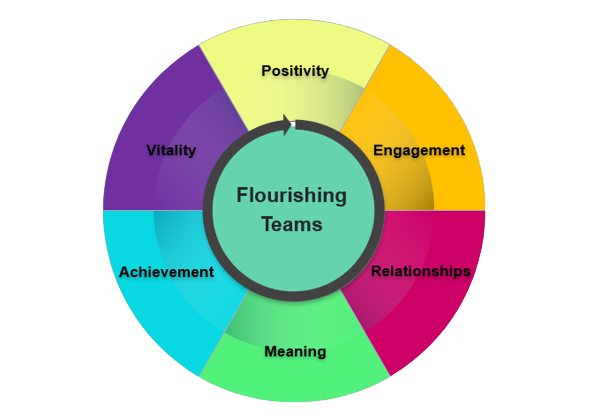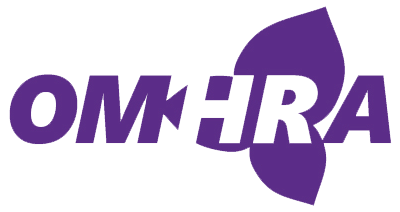
In recent years, organizations have recognized the importance of employee wellbeing in improving productivity, engagement, and retention. Positive psychology or the science of flourishing focuses on the study of optimal human functioning and offers a framework that can be effectively used for enhancing wellbeing in organizations. Let’s explore the PERMA-V model of positive psychology and its role in creating a comprehensive wellbeing strategy for flourishing in organizations.
The PERMA model of positive psychology was developed by Martin Seligman, to conceptualize the main factors contributing to wellbeing. PERMA stands for Positivity, Engagement, Relationships, Meaning, and Achievement. In addition to these five pathways, we will also explore the Vitality pathway, which was later added to the model by Emiliya Zhivotovskaya and how they can all be applied to four dimensions of wellbeing.
Positivity is the first pathway in the PERMA-V model. It involves experiencing positive emotions such as joy, gratitude, and contentment. Organizations can foster positive emotions in employees by recognizing and rewarding their accomplishments, creating a positive work environment, and promoting work-life balance.
Engagement refers to the state of flow that people experience when they are completely absorbed in a task. This pathway involves using one’s strengths and skills to achieve a goal. Organizations can promote engagement by providing employees with challenging and meaningful work, allowing them to use their strengths and skills, and creating opportunities for growth and development.
Relationships are a crucial aspect of wellbeing. This pathway involves building and maintaining positive relationships with others. Organizations can foster positive relationships among employees by promoting a culture of collaboration and teamwork, encouraging communication and feedback, and creating opportunities for socializing and team building.
Meaning refers to the sense of purpose and fulfillment that people derive from their work and their lives. This pathway involves identifying one’s values and goals and aligning them with one’s work. Organizations can promote meaning in the workplace by providing employees with a sense of purpose, allowing them to contribute to something greater than themselves, and encouraging them to pursue their passions and interests.
Achievement involves accomplishing one’s goals and experiencing a sense of accomplishment and mastery. This pathway involves setting goals and working towards them, even in the face of obstacles. Organizations can promote achievement by setting clear goals and providing employees with the resources and support they need to achieve them.
Vitality involves taking care of one’s physical and emotional wellbeing, including getting enough sleep, exercise, and nutrition. Organizations can promote vitality by providing employees with access to resources such as wellness programs, health coaching, and mental health support.
There are multiple dimensions of human flourishing that organizations should consider when developing a wellbeing strategy. These dimensions include mental, emotional, physical, and spiritual wellbeing. Mental wellbeing involves having a positive growth mindset, reframing unhelpful thought patterns, and managing stress effectively. Emotional wellbeing involves being aware of and able to regulate one’s emotions, and experiencing emotions in a healthy manner. Physical wellbeing involves taking care of one’s physical health, including getting enough sleep, exercise, and nutrition. Spiritual wellbeing involves having a sense of purpose and meaning in one’s life.
By focusing on these dimensions of wellbeing and incorporating the PERMA-V model into their wellbeing strategy, organizations can create a comprehensive approach to promoting employee wellbeing using positive psychology. This approach can lead to a happier and healthier workforce, increased productivity, engagement, and retention, and ultimately contribute to the overall success and sustainability of the organization. As human resource professionals we play a crucial role in implementing these strategies and creating a culture of wellbeing within our organizations. Let’s prioritize employee wellbeing, so we can cultivate flourishing teams.
Lorena Krasnai Caprar: Manager Human Resources/Health & Safety – County of Brant
Lorena’s life purpose is to energize and inspire people to be their authentic self, so that they can show up in the world at full potential and live a flourishing life.
A catalyst in the evolution of human sustainability, Lorena is dedicated to helping individuals, organizations and communities thrive. She is a passionate organizational consultant, trainer, and coach, with over a decade experience in HR management, ready to support your needs in the space of psychological health and safety, resilience strengthening and enhanced wellbeing.
Lorena acquired knowledge through a Master of Arts in Leadership and Certification in Applied Positive Psychology. She is certified as Resilience Trainer, Positive Psychology Consultant and Coach, Psychological Health and Safety Advisor, and she is a Mental Fitness Coach.
As an expert advisor, she founded KLo Human Sustainability from her desire to meet humanity upstream to prevent psychological harm and promote flourishing.
References:
Seligman, M. E. (2012). Flourish: A visionary new understanding of happiness and well-being. Atria Paperback.
Presented by

Archives
Categories
- Attraction and Recruitment
- Benefits
- Celebrating Success and Recognition
- Change Management
- Coaching and Conflict Resolution
- Culture
- Diversity, Equity and Inclusion
- Emotional Intelligence
- Employee Engagement
- Employee Performance
- Labour Disruption
- Mentoring
- OMHRA activities
- OMHRA Events
- Psychological health and safety of the HR professional
- Recruitment
- Recruitment and Retention
- Retention
- Uncategorized
- Unique ideas for recruiting in a tight job market
- Wellness
Recent Posts
- How Leadership Development Coaching Provides Better Outcomes
- Better Leadership: Focus on a Coach Approach
- Creating a Psychologically Safe Workplace
- Group Health Insurance – The Impact of Preferred Pharmacy Networks on Employees’ Mental Health
- Provide Real Support For Your Mid-Career Team’s Psychological Resilience
